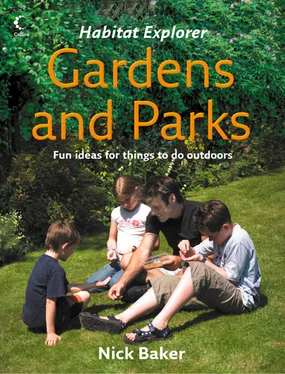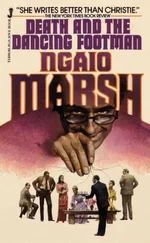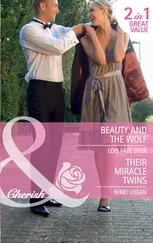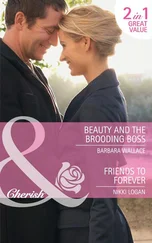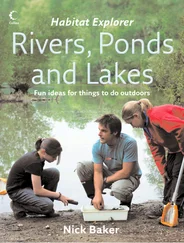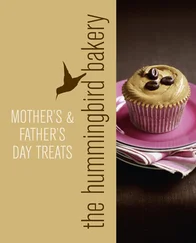In recent years, watching birds in gardens and being aware of who visits and in what numbers has given us a better understanding of just how bird populations are changing. It also shows how important the wildlife garden can be in supporting many species.
There are many products, catalogues and shops dedicated to encouraging birds into your garden, and once you have gained their interest, the feeling of successfully helping them makes your heart glow. So why stop at birds, why not encourage butterflies and other insects, mammals and reptiles, and amphibians, too?
There is more to encouraging birds into your garden than hanging out a bag of nuts or throwing out some crumbs or stale bacon rind when the generous mood takes you! Birds are feathered ambassadors for what we humans can do for wildlife. Just by nailing together a few planks of wood and providing a variety of food and a source of water, we can make their lives easier. They will return the favour by giving us a little glimpse into their often fascinating lives.
Bird populations in the wild depend mainly on two things: first they need food, and second they need somewhere to live and nest. So if you are to make your local patch of interest to our feathered friends you need to bear these things in mind.
Swallows love to nest on our homes and outhouses. It’s hard to imagine that they come all the way from central and southern Africa every summer just to stick mud together under our eaves!
A house sparrow: these chirpy little birds are associated with our homes and buildings but, for some reason, their numbers are declining in their natural range in Europe. Here is a bird we can help by feeding them and providing nest sites.
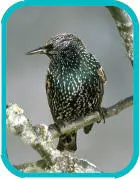
The European starling is a noisy city dweller that gathers in impressively huge flocks in the winter.
The wren is the king of the singers; a small bird with a loud voice that loves a garden with untidy corners and dense shrubs.
It’s a two-way relationship
Feeding the birds is probably the single most popular way in which people interact with the natural world; from feeding pigeons on the park bench to the bird table in the garden. What you are doing is simply taking on the needs and requirements of the birds.
The ways you can present food to birds is becoming very big business, and by using the right mix and the right feeder in the right place, you can attract birds almost to order! But for now, here’s a low-budget idea to get you going (see opposite).
Choose a variety of foods. Not all birds like eating the same things – finches love seeds (niger and sunflower), tits are crazy about nuts, thrushes like fruit and woodpeckers love fatty, suet-based stuff.
YOU WILL NEED
> 1 litre plastic milk carton
> marker pen
> ruler
> scissors
> twigs
> bird seed
> funnel
> string
1 Using the marker pen and ruler, draw a line 1.5cm from the bottom of the plastic milk carton and parallel to the base on the opposite side to the handle.
2 With the scissors, cut along the marked line and then, at each end of the incision, cut up about 3cm.
3 Fold the flap you have just created back into the bottle and add a perch or two. Make these from twigs or any straight bits of wood; push them into a hole below the feeding tray.
4 Fill with seeds, pouring them into the container through a funnel. Screw the lid back on and then hang up the container with string in your garden.
Take my advice
* Position your feeders carefully. Birds like to be in the open so that predators cannot sneak up on them. But they also like to have cover nearby so that if a sparrow hawk comes cruising around, they can all leap into cover.
* Vary the locations of your feeders, as some birds are bold while others are shy. So feed close to the house by all means, but do not forget the nervous ones and provide food at the end of the garden too.
* Different birds feed in different ways. Some rarely get onto the bird table but prefer to stay on the ground, while others like flat surfaces, and some like to hang.
* Feed only good quality foods. If it’s cheap, it may have lots of wheat in it. Cheaper peanuts may also contain a fungus infection that can kill the birds you are helping.
The cheapest nut feeder has to be a plastic mesh bag, the sort that supermarket fruit often comes in. Simply stuff it with peanuts and hang it up. I hate the bright orange of the netting but I have noticed that siskins (one of my favourite birds) show the most interest in these feeders even though they have many others (some of them scarily expensive too) to choose from. This could well become a subject for a garden experiment!
Alternatively, make a full-fat nut pudding. This animal fat-based food is made from warmed animal fat or suet, mixed with any variety of seeds, fruits, nuts or insects and left to set before being served up. It’s a great way of providing a high-energy winter diet for your birds. My favourite way to use the suet reciped is to make fat cones – see opposite – or dip teasel heads into the melted suet.
Another way to provide bird cake is to leave the mix to set in a tin that is wedged in place between three blocks screwed to your bird table. Or you can form a ball and stuff it in a handy plastic fruit net; fill an old coconut shell; or drill holes in a log and jam the fat into these. This last is a real favourite for wood peckers! This recipe is very easy to make and you can fine tune the ingredients, perhaps including some peanuts, sunflower seeds or millet, according to what the birds seem to prefer.

Take my advice
* If you have just started feeding the birds in your garden, it may take them a little while to learn about your new service. So be patient and if after a few weeks there are still no visitors, try relocating your feeding station. It may be that the birds feel just a little too exposed.
* Keep your feeders clean by washing and sterilizing them every few months and try to avoid food hanging around and becoming stale. Feeders over concrete or decking mean you can easily sweep away any spilled food, which may otherwise attract unwanted wildlife such as rats.
YOU WILL NEED
> pine cones
> string
> 250g animal suet
> 1 jar unsalted peanut butter
> plain flour
> bird seed
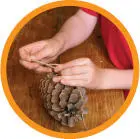
1 Next time you are out for a walk collect old dry pine cones in various sizes. When you get home, tie some string around the base of a few of them.
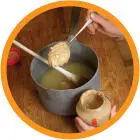
2 Take a saucepan and heat the suet slowly in it until it has melted. Add the peanut butter and mix in until it has melted too.
Читать дальше
